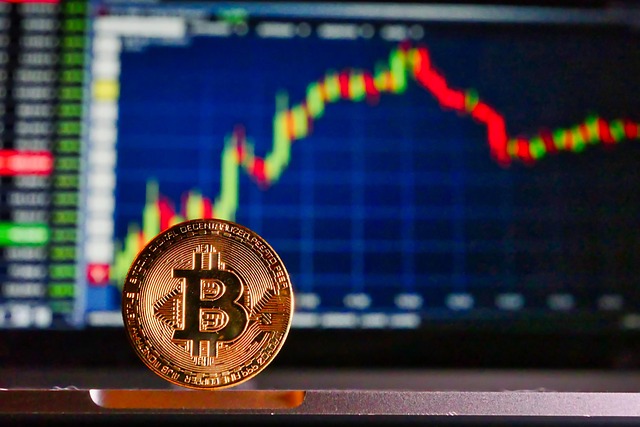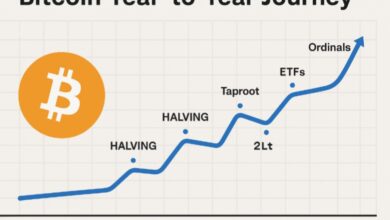Crypto Bubble — What it Means, What We’ve Learned, and What to Watch Next

Meta description: A relaxed, research-backed deep dive into the “crypto bubble”: its history, mechanics, recent shocks (Terra, FTX), macro drivers like Bitcoin halving, regulatory responses, and practical takeaways for investors and policy makers.
Intro — the bubble question, in plain English
Everyone keeps asking: is crypto a bubble? The short answer is: parts of the market have repeatedly behaved like speculative bubbles — rapid price rises, fads, leverage, and sudden collapses — but the space also contains real infrastructure and experiments with monetary design. To decide whether “crypto” as a whole is a bubble you need to separate hype from foundational utility, and look at the signals that precede crashes. Below I walk through the history, the mechanics, recent evidence, and concrete things to watch.
A quick history in three acts
- Early mania and repeated booms — Bitcoin and early altcoins had volatile boom/bust cycles as early as 2011 and more visibly in 2017.
- The 2020–2022 blowoff and contagion — A massive 2020–21 bull run brought huge inflows, token launches, and leverage; 2022 then saw multiple shocks (algorithmic stablecoin collapses, lender failures, exchange crises). The Terra-Luna collapse wiped out tens of billions practically overnight and illustrated how fragile algorithmic stablecoins can be. (Wikipedia)
- FTX and trust erosion — The November 2022 bankruptcy of FTX exposed grave governance failures and misuse of customer funds; its implosion and the subsequent prosecutions deeply undermined trust in major intermediaries. (Investopedia)
Why bubbles form in crypto: mechanics (simple)
- Narrative-driven demand. Stories about “decentralized finance,” instant riches, or disruption attract speculative capital.
- Leverage and derivatives. Easy leverage (margin trading, lending) amplifies gains and losses.
- Weak risk controls & interconnections. Centralized exchanges, custodial practices, and unbacked stablecoins create single points of failure.
- Regulatory gaps. Inconsistent rules across jurisdictions let risky businesses exploit loopholes. Recent regulatory reviews highlight these gaps. (Reuters)
Evidence for — and against — calling crypto a bubble now
For: Recurrent episodes (Terra, FTX, loan-book collapses) look like bubble aftermaths: euphoria → leverage → shock → contagion. These events destroyed wealth and trust, classic bubble fallout. (Wikipedia)
Against (or nuance): Not everything is vapor. Blockchain infrastructure, settlement layers, tokenized assets, and programmable contracts are real technical innovations. Some institutions now custody crypto with regulated trust charters and the market has matured in liquidity and product sophistication since 2017. But “mature” does not mean “safe from bubbles.”
Recent important signals (what recent research and watchdogs say)
- Regulatory watchdogs worry about gaps. Global bodies have repeatedly warned that fragmented rules create systemic risks and regulatory arbitrage. That matters because when rules don’t cover crypto lending or stablecoins comprehensively, shocks can spread across borders. (Reuters)
- Macro events and supply shocks matter. For Bitcoin, the April 20, 2024 halving (cutting mining rewards by 50%) triggered renewed narratives about scarcity — halvings have historically been associated with price rallies (but with lots of noise and time lags). (Investopedia)
- Systemic risk reports. Central banks and the BIS have published papers highlighting how crypto booms and busts affect emerging markets and financial stability. These documents treat crypto as a material risk if adoption and interconnections grow. (bis.org)
How to tell if we’re in a bubble today (practical checklist)
- Rapid price appreciation across many unrelated tokens (not just a few projects) suggests broad speculative behavior.
- Widespread leverage, especially in retail products (high-margin lending, yield promises).
- New “stable” products that lack transparent backing or are highly algorithmic.
- Regulatory panic or sudden legal actions against major players (these are often the detonators).
- Market concentration in a few centralized platforms with poor transparency.
SEO-friendly FAQ (short)
Q: Has crypto popped before? Yes — multiple times, notably 2017 and 2021–22, with major collapses like Terra and FTX. (Wikipedia)
Q: Will Bitcoin halving cause another bubble? Halvings reduce miner supply flow, feeding scarcity narratives; they can contribute to rallies but aren’t decisive alone. (Investopedia)
Conclusion — clear thinking wins
Crypto shows both bubble-like behavior and meaningful innovation. The repeated pattern of euphoric inflows followed by sharp unwinds (and contagion across platforms) confirms the market’s susceptibility to speculative bubbles. At the same time, base-layer technology and some institutional adoption are legitimate developments. So rather than labeling the entire sector a permanent bubble, it’s more accurate to say: parts of the crypto market are highly speculative and periodically bubble-prone; other parts are foundational but still immature.
Recommendations (for different audiences)
For retail investors
- Treat crypto as high-risk capital — only invest money you can afford to lose.
- Avoid high-leverage trading and yield promises that sound too good to be true.
- Prefer regulated custodians or self-custody with robust operational security.
For institutional investors
- Do deep operational due diligence (custody, governance, counterparty risk).
- Build contingency plans for runs and contagion; stress-test exposures.
For policy makers
- Prioritize consistent cross-border rules for stablecoins, custody, and lending to reduce arbitrage and systemic spillovers. Recent FSB and BIS warnings highlight this need. (Reuters)
For researchers and journalists
- Focus on transparency metrics (reserve audits for stablecoins, on-chain flows, leverage measures) rather than price-only narratives.















